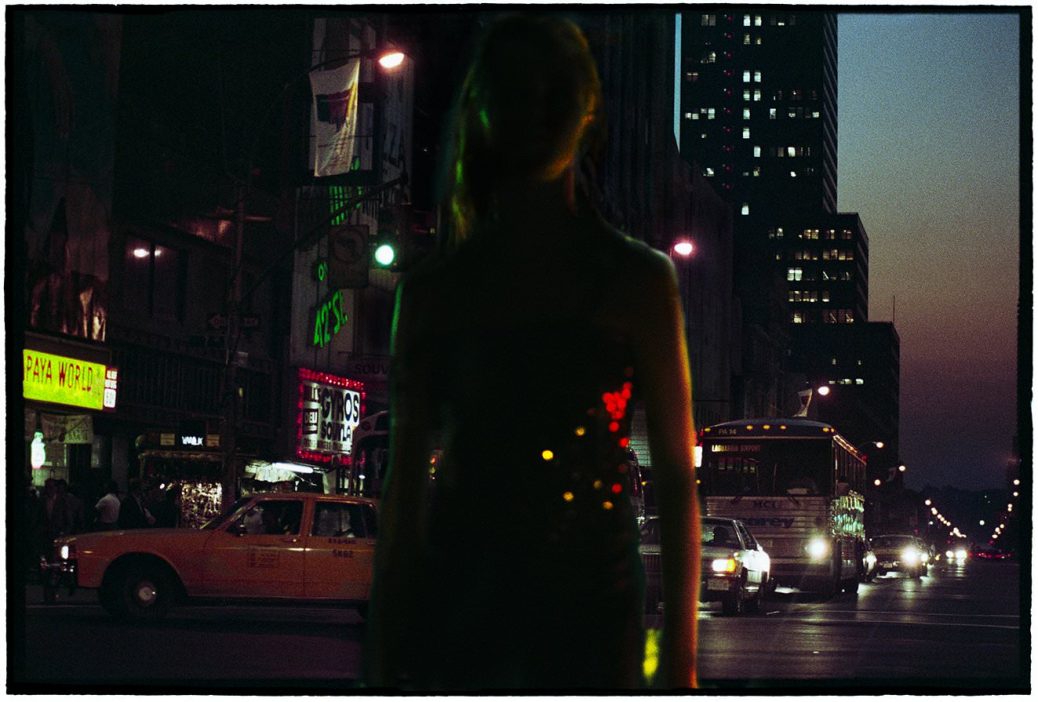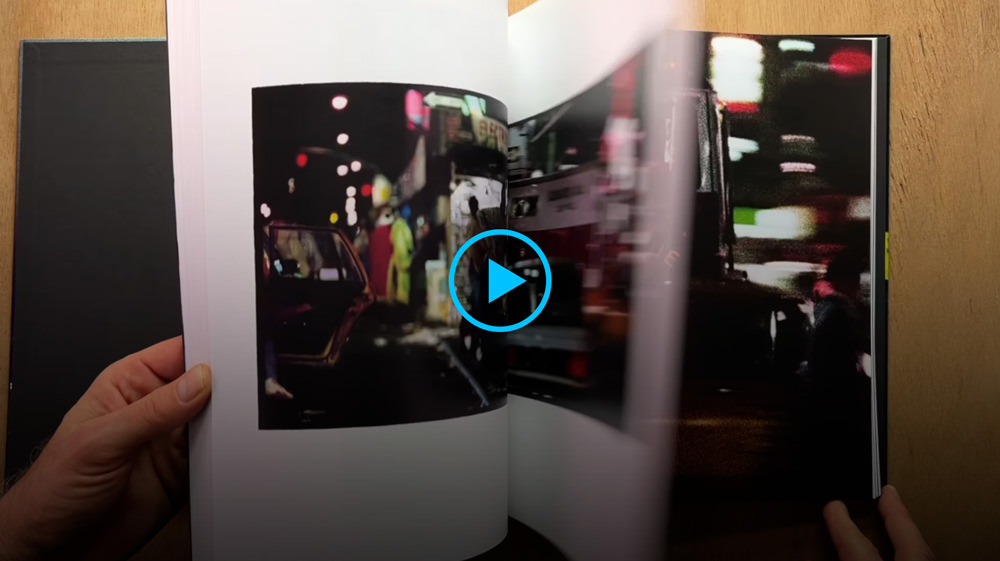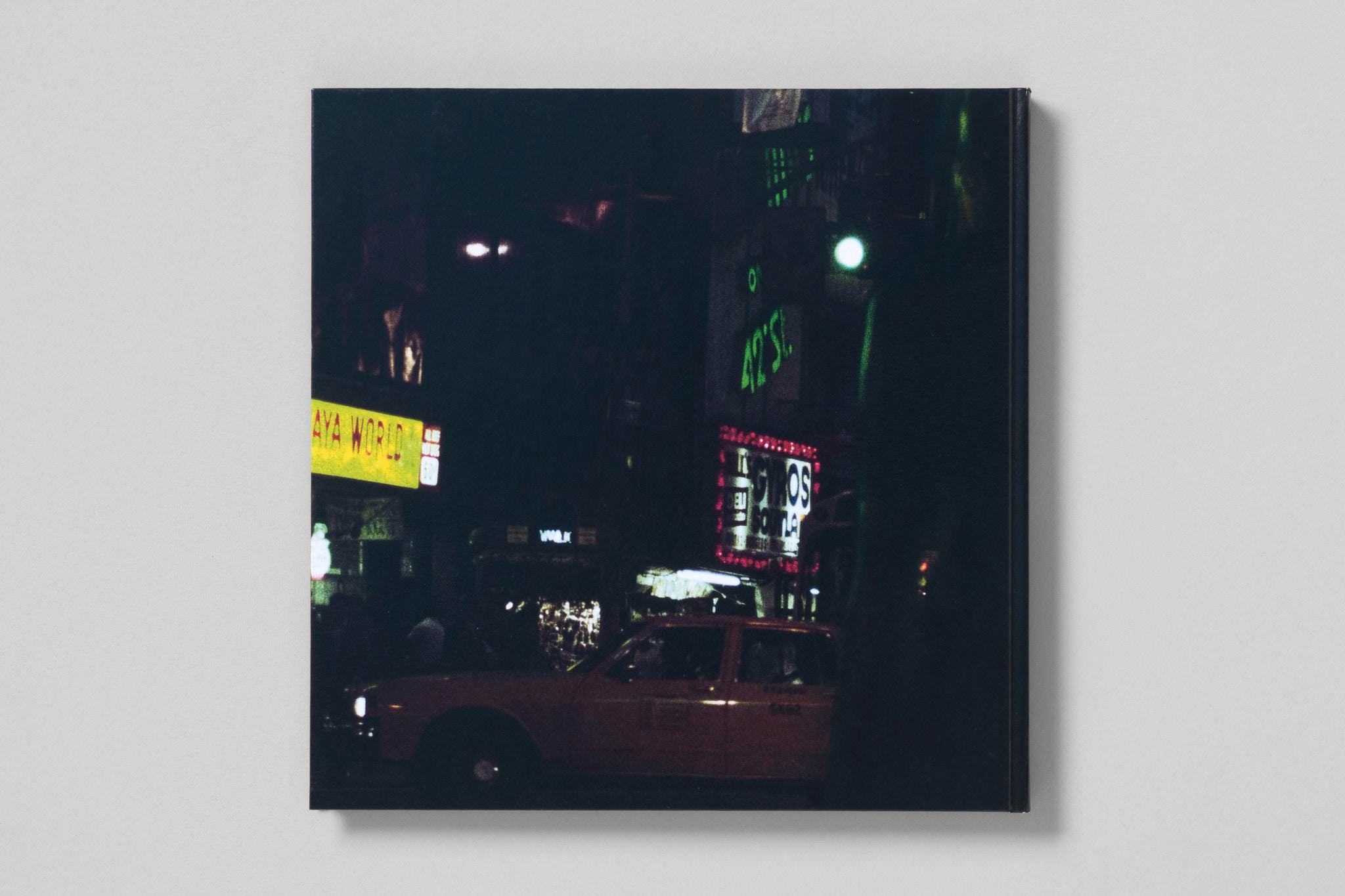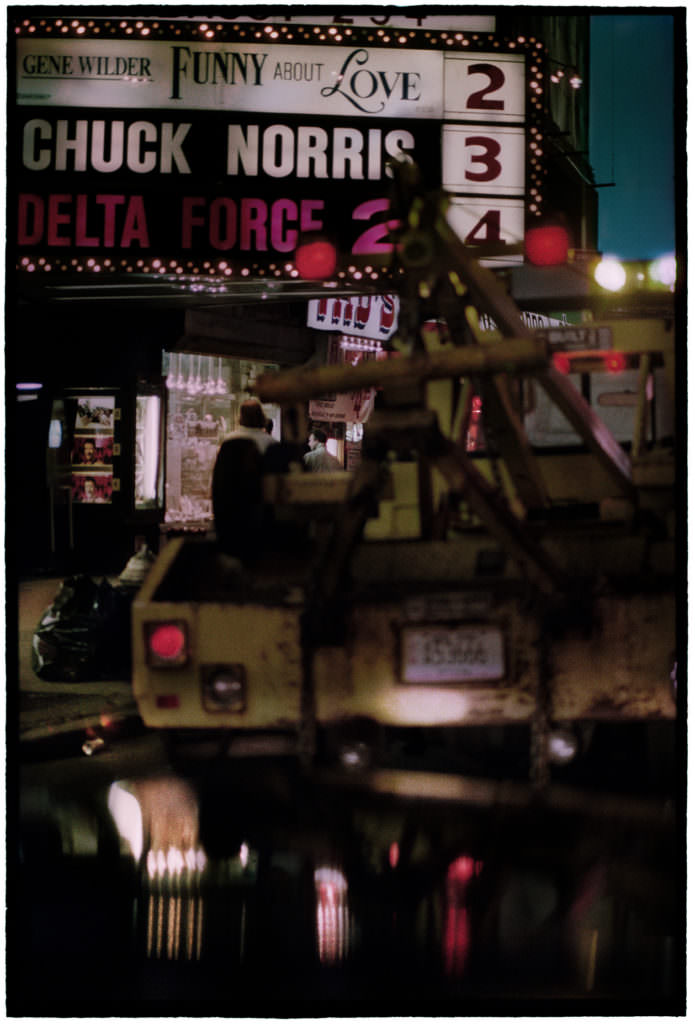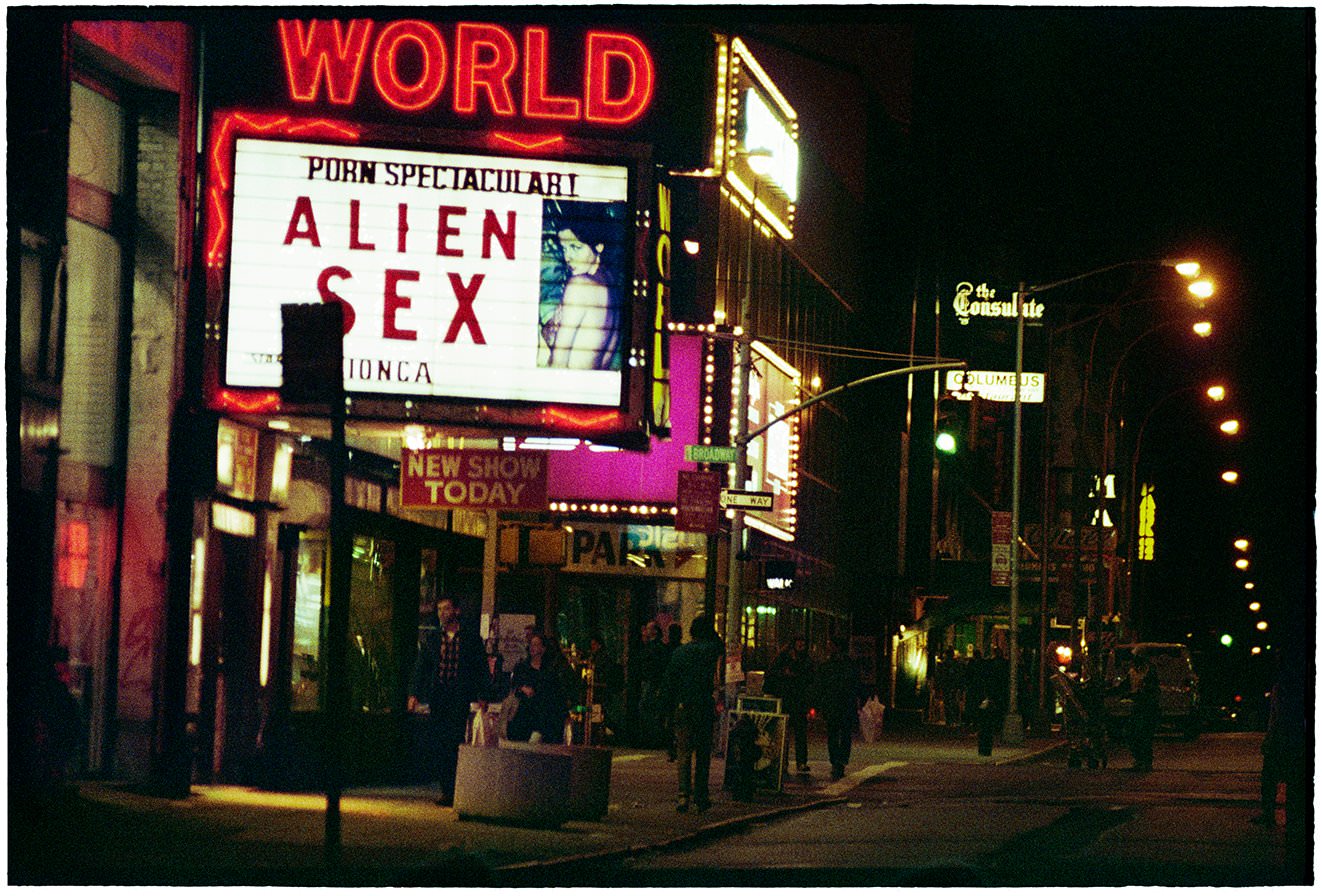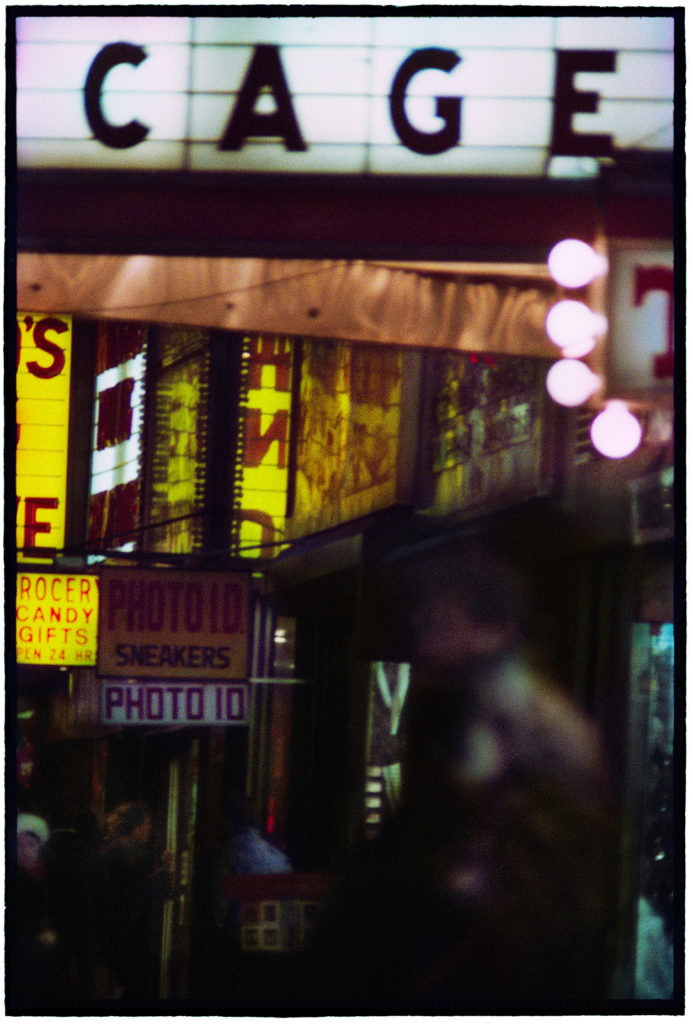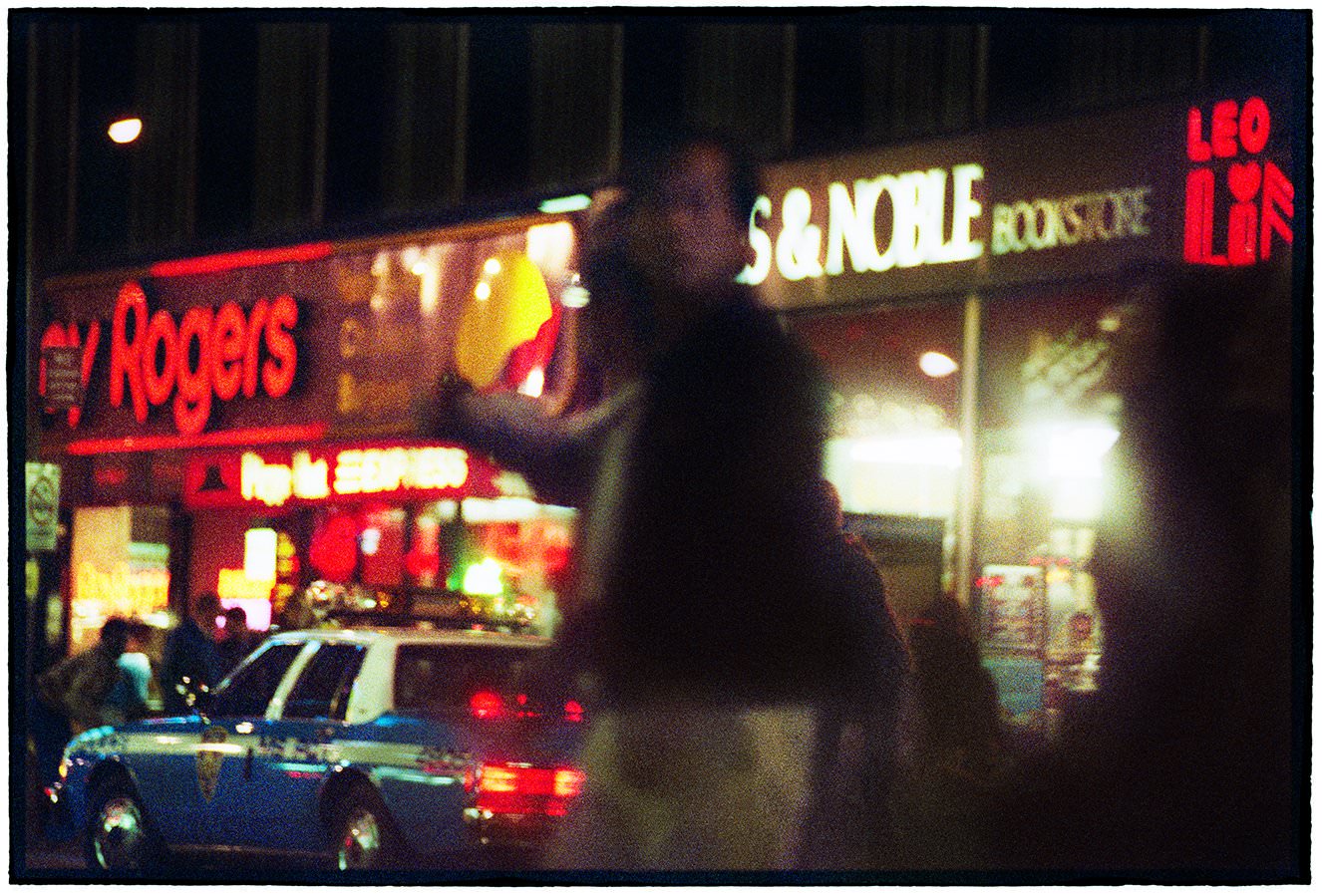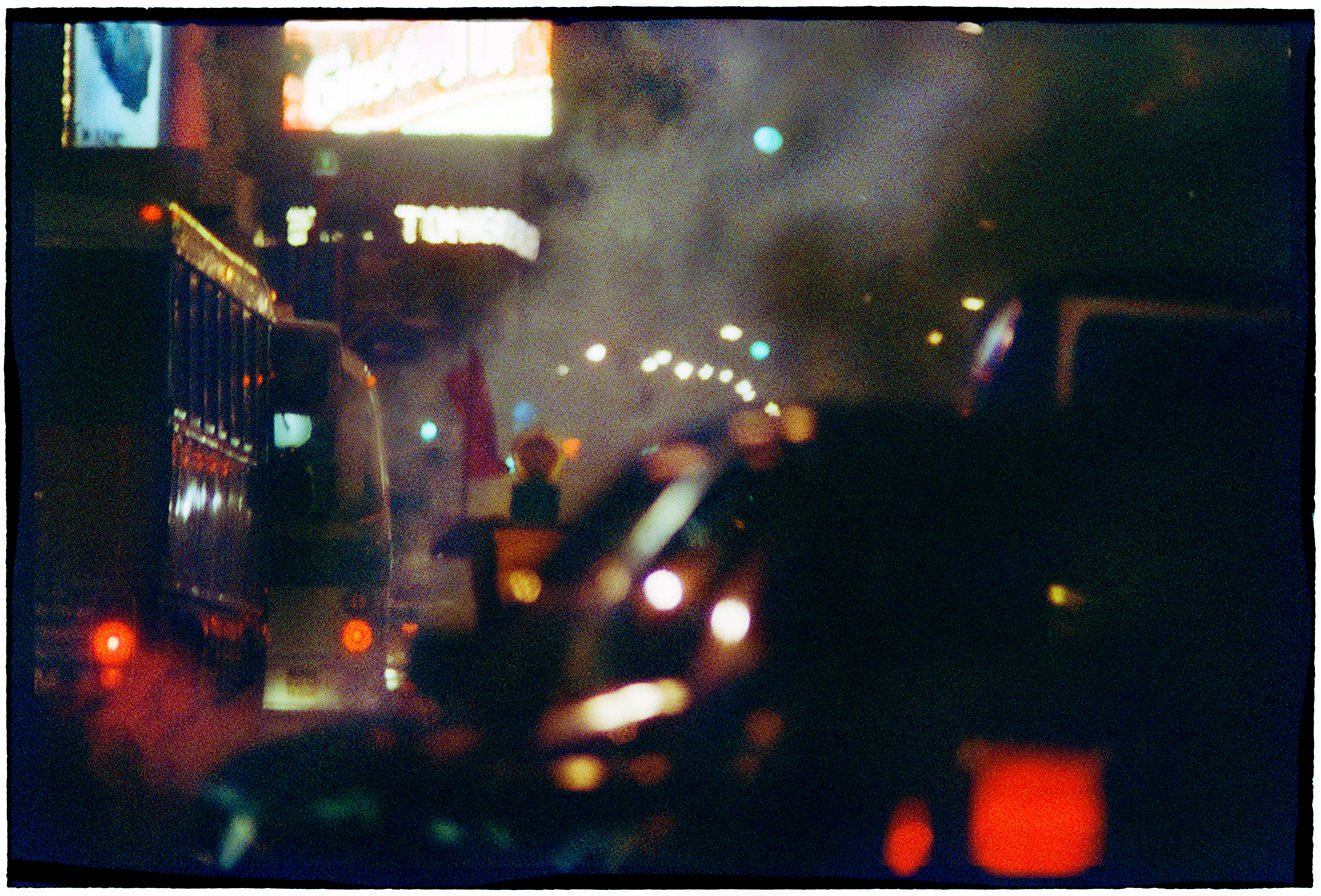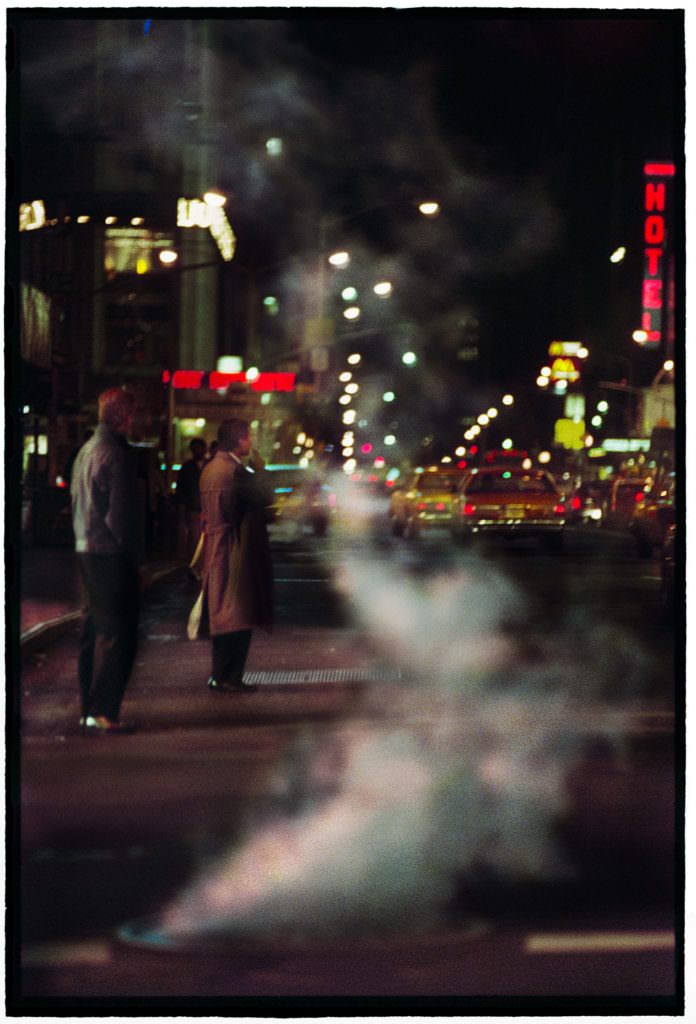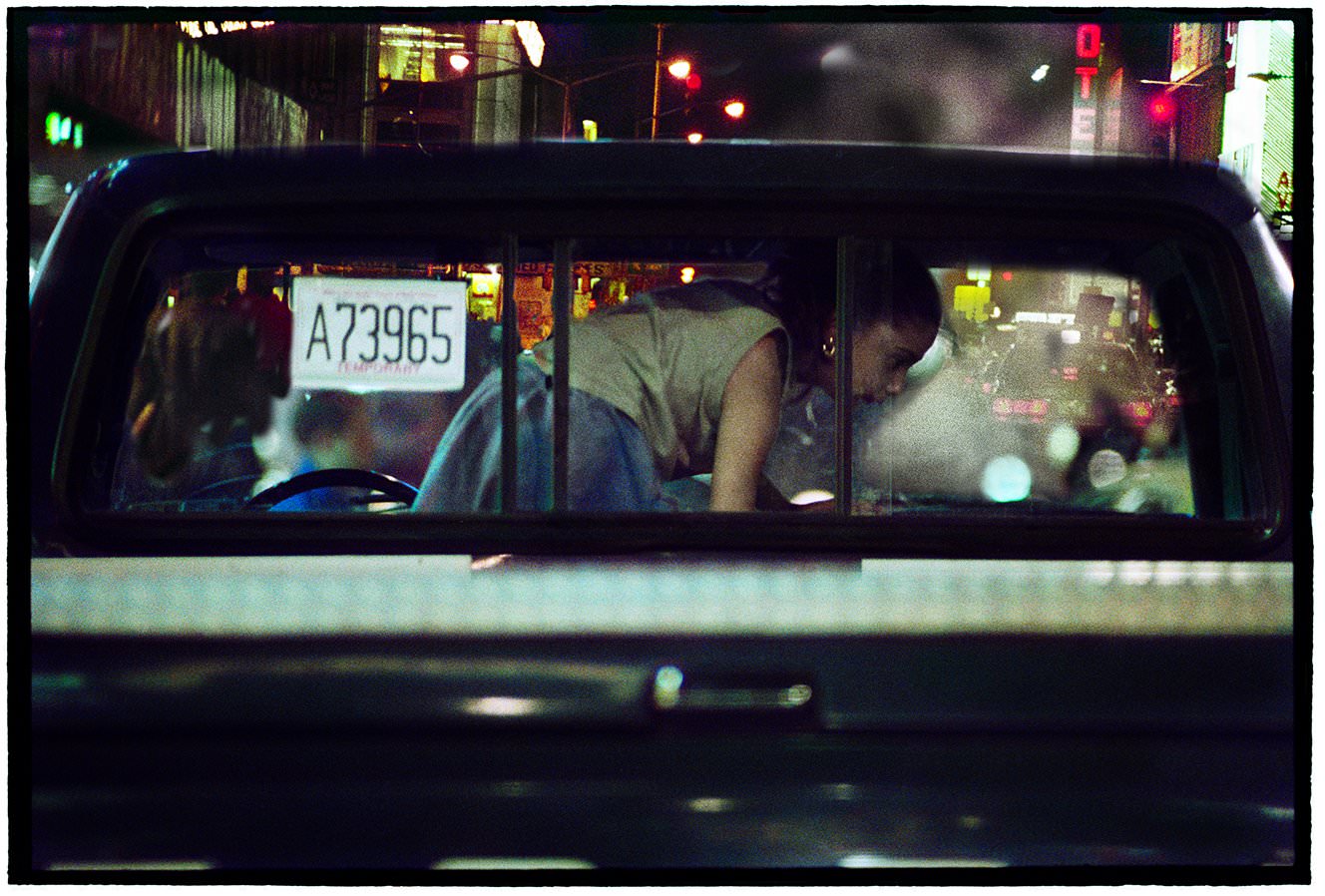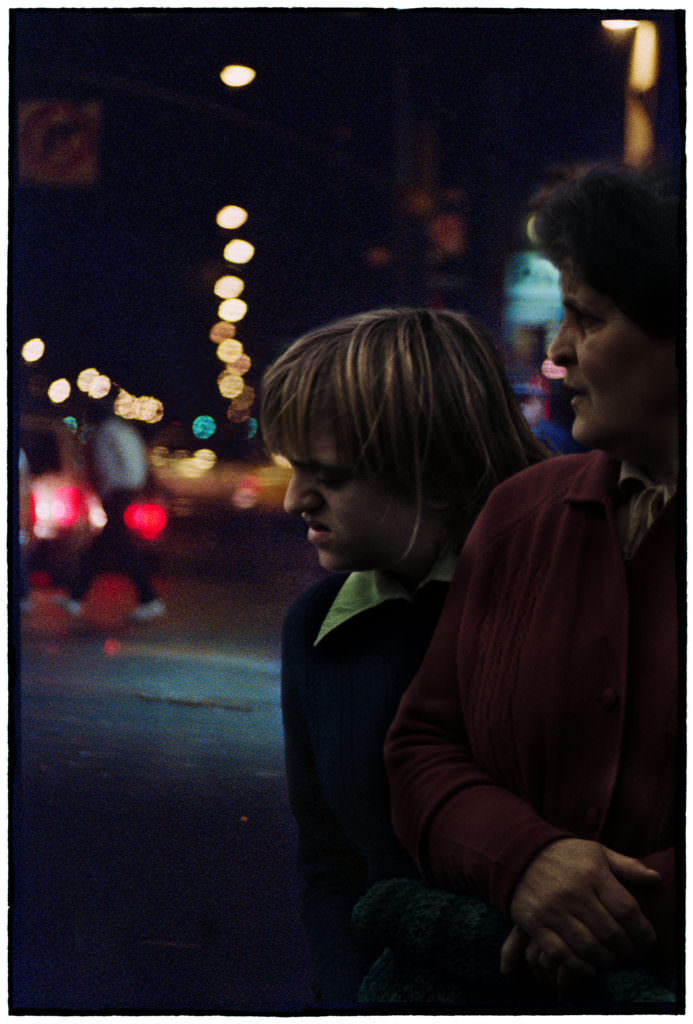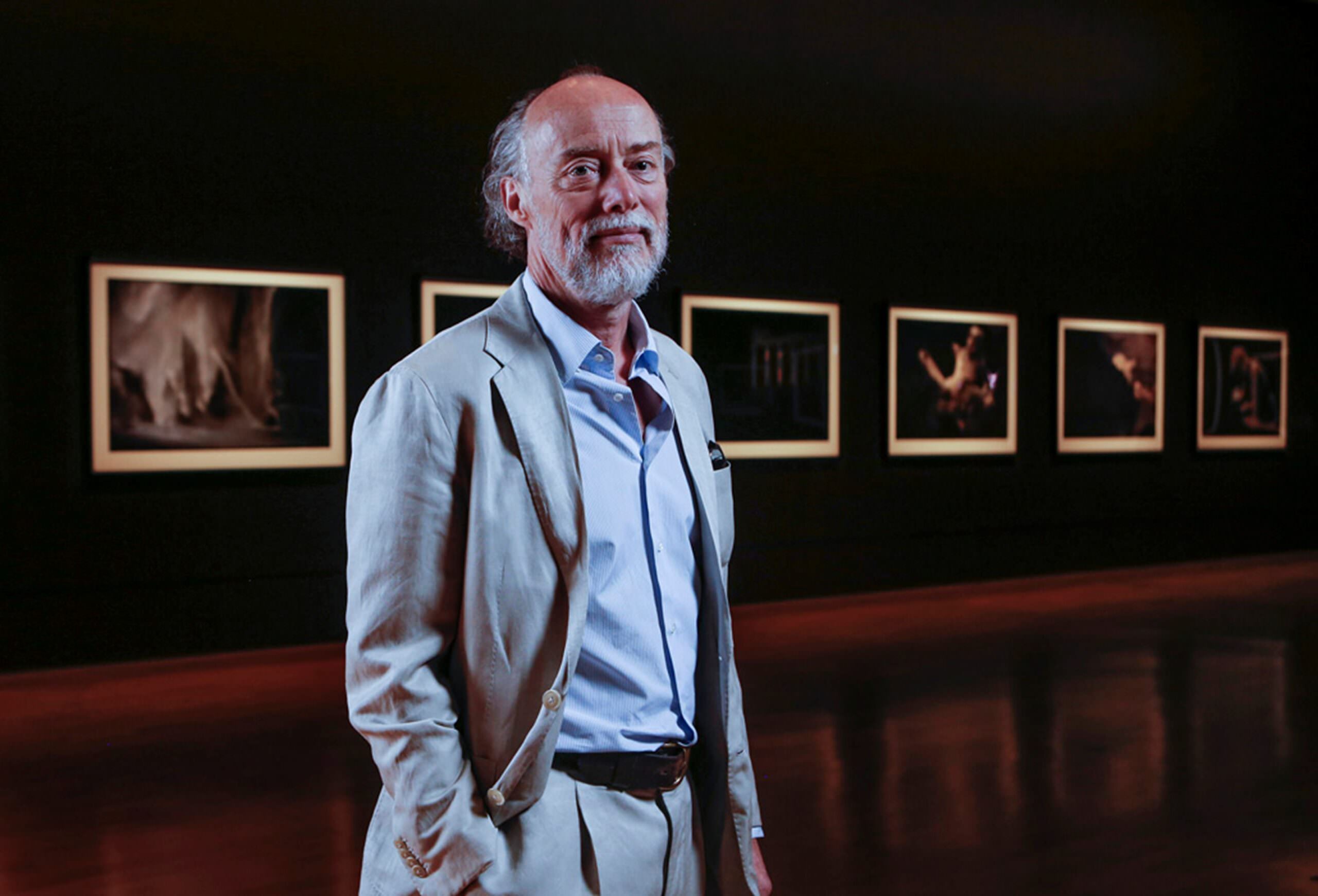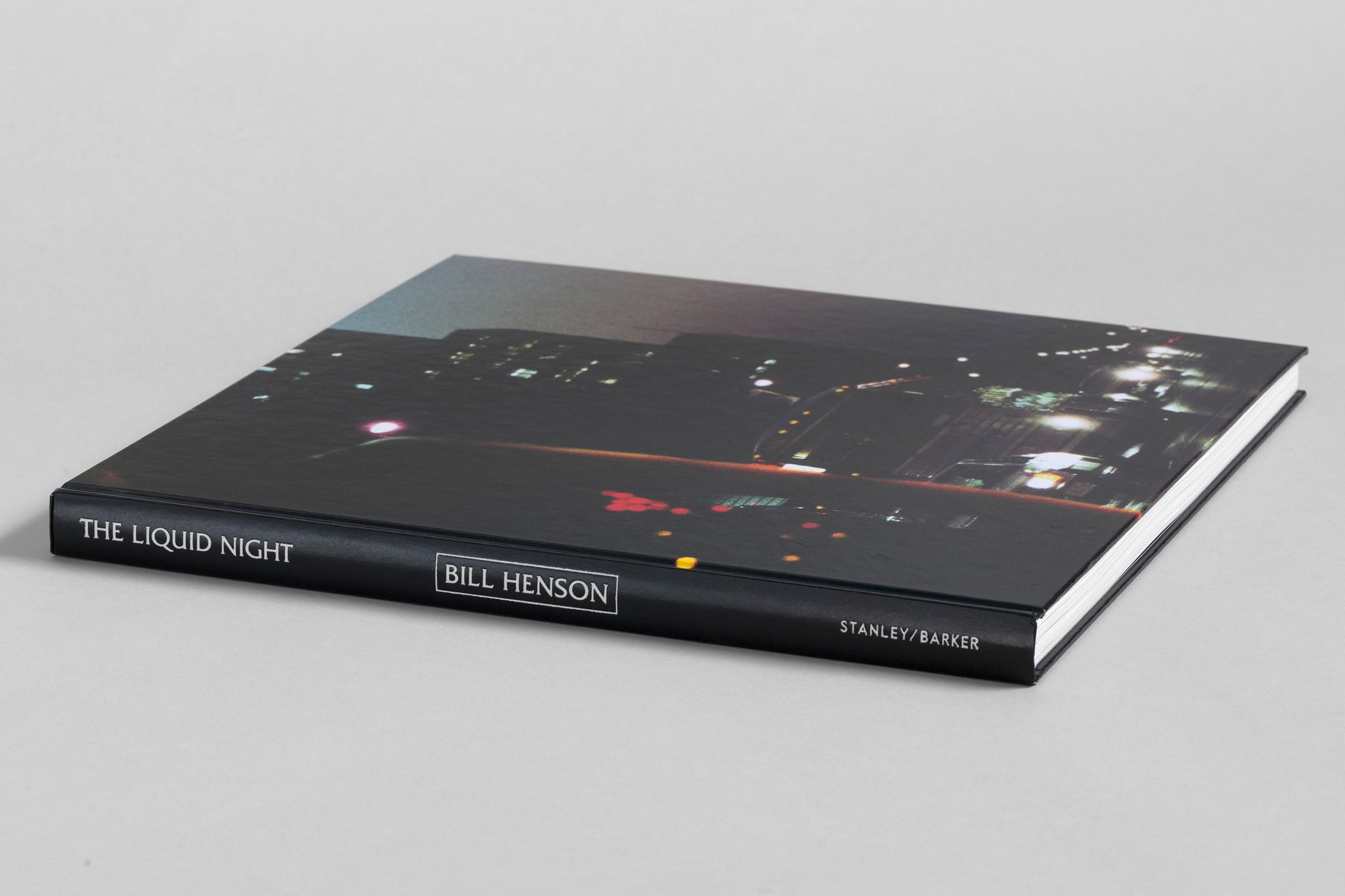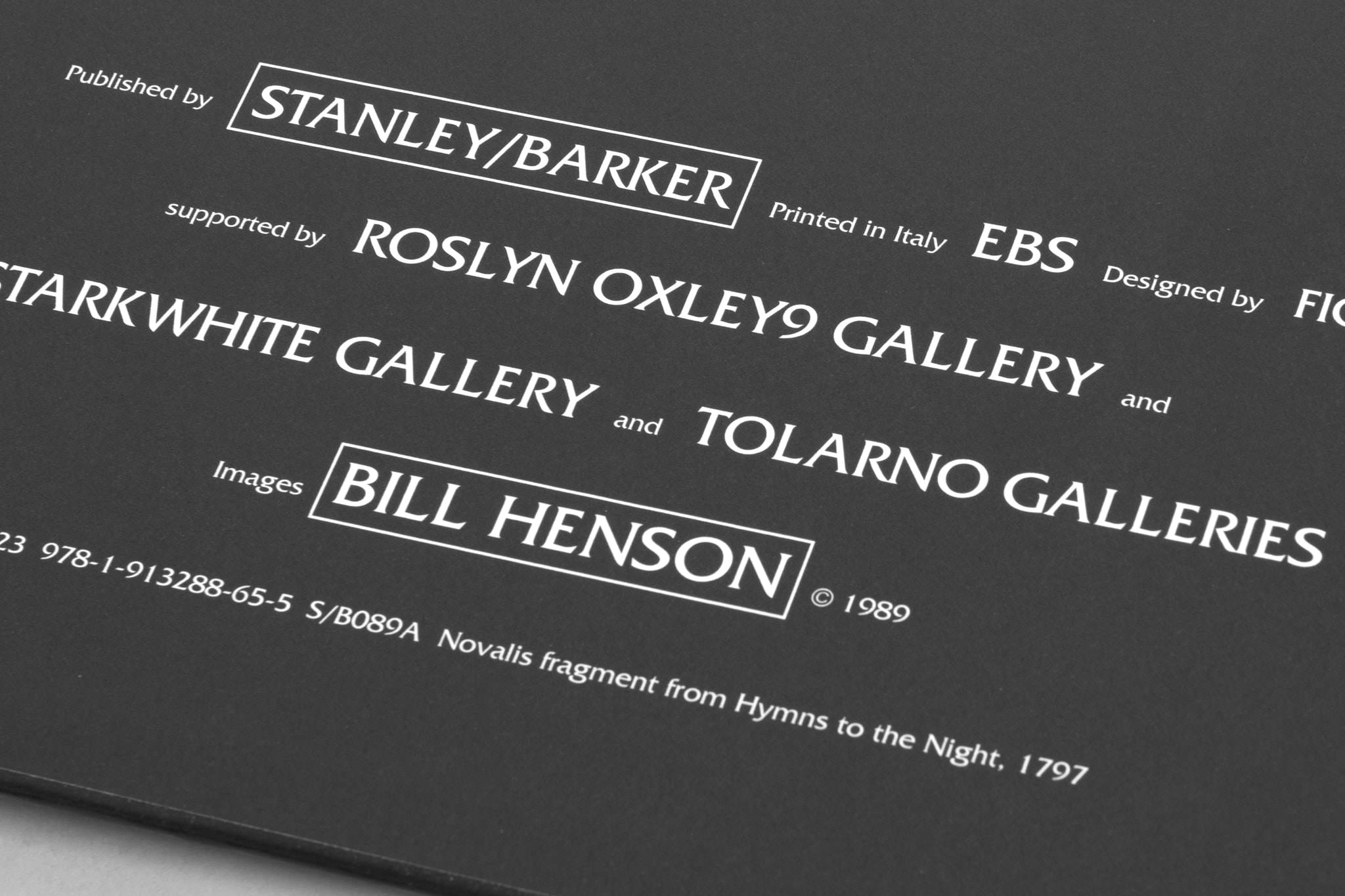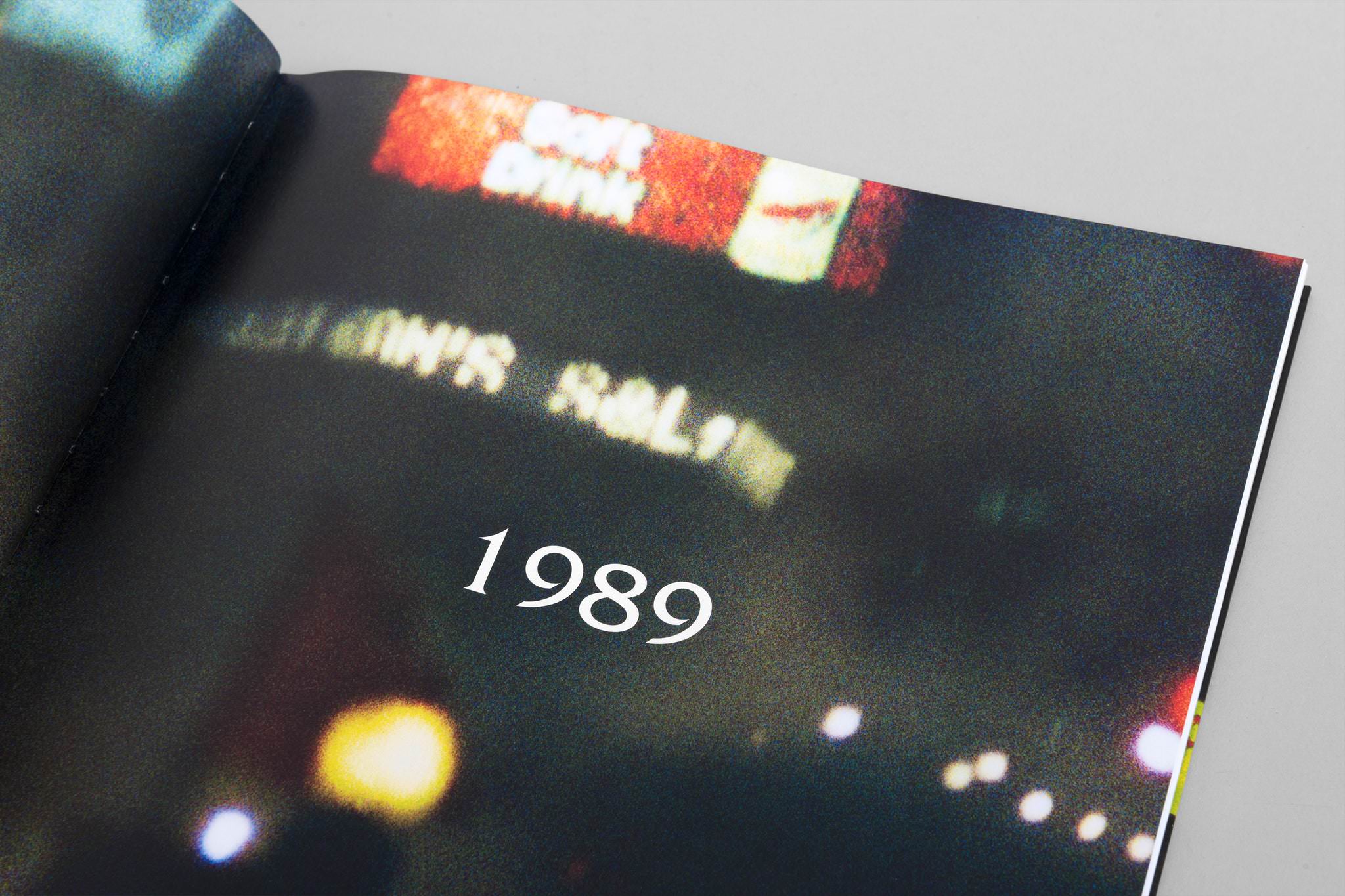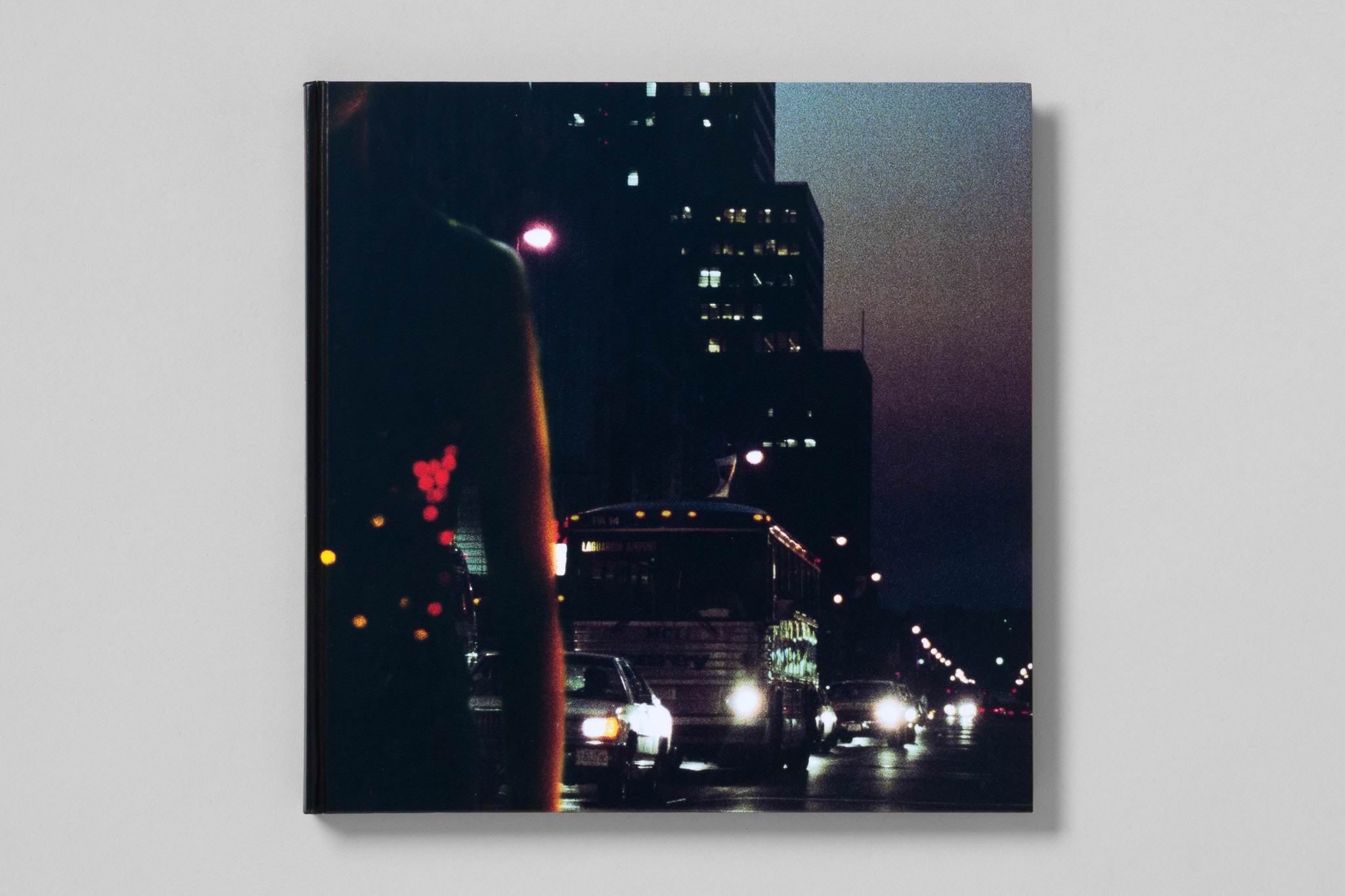Bill Henson: The Liquid Night
Bill Henson’s latest book, The Liquid Night, showcases captivating visuals captured by the acclaimed artist on 35mm color negative film during his time in New York City in 1989. The images offer a mesmerizing nocturnal exploration through the dynamic, neon-drenched streets of a bygone America.
Originally conceived as formal 35mm frames, these images served as a pursuit of an artistic resolution that captivated Bill Henson. He has now translated this fascination into digital terms, creating a compilation of new art that encapsulates a world that has faded away like a nearly forgotten dream, tugging at the mind as a set of animated emblems now absent from contemporary reality.
They revisit, residing in the artist’s memory and appearing as peculiar images in the spectator’s mind, a world representing lost time, only to be rediscovered through the restored function of memory.
Let’s imagine a spellbinding era: a jazz bar near Washington Square. The ritualistic presentation of a gin and tonic, akin to the sacrament of an old-time religion, and the subtle repositioning to bring Tony Bennett closer to the piano, an instrument of his obsession. Returning to the Algonquin at midnight, when the doors closed, required being ushered in by the bellhop whose hair turned from gray to white, alongside Matilda the cat, enduring perpetually through the seasons of aging.
The initial concept involved a collage, but in The Liquid Night, the pages reveal images with their own antiquated significance. Some are structured by principles of magnification. In recent years, Bill Henson discovered how to exhibit them, developing an appreciation for the detail and iconoclasm within these images and their convergence. Initially, his mind was blank, but gradually, he realized the necessity of showcasing the negatives to imprint the essence of a past life. Moving around images, sometimes in extreme close-up, he rediscovered the incredible beauty of film, aiming to reproduce a version of the familiar Francis Bacon epiphany: the discovery of the artist’s distinctive and self-defining form. This revelation took the shape of a wild extremity of nostalgia, reminiscent of Tarkovsky’s haunting and profoundly serious nostalgia. Bradley’s jazz bar is now a mere ghostly outline, forever intertwined with a sense of loss.
About the Author
Born in 1955 in Melbourne, Victoria, Bill Henson resides and works in Melbourne. He stands as one of Australia’s enduring contemporary artists, boasting a career that spans over four decades. Henson’s diverse portfolio of photographs encompasses portraits of adolescents and emotive landscapes, inviting viewers to reflect on the ambiguous and transcendent qualities embedded in his creations.
Having debuted with his first solo exhibition at the National Gallery of Victoria in Melbourne in 1975, Henson has since showcased his work extensively both within Australia and on the international stage. Notable solo exhibitions include “Bill Henson” at the National Gallery of Victoria, Melbourne (2017); “Oneiroi” at the Hellenic Museum, Melbourne (2016); “Cloud Landscapes” at the Art Gallery of New South Wales, Sydney (2013); “Bill Henson” at Roslyn Oxley9 Gallery, Sydney (2012); “Bill Henson” at the Institute of Modern Art, Brisbane (2007); “Bill Henson: Three Decades of Photography” at the Art Gallery of New South Wales, Sydney, and the National Gallery of Victoria, Melbourne (2005); “Bill Henson” at Centro de Fotografia, University of Salamanca, Salamanca, Spain (2003); and “Bill Henson” at the 46th Venice Biennale, Australian Pavilion, Venice (1995). In addition to solo exhibitions, Henson has been featured in various group exhibitions. Henson’s works are held in numerous collections, including all major state galleries in Australia. Internationally, his art has found a home in prestigious institutions such as the Bibliotheque Nationale de France in Paris, the Victoria and Albert Museum in London, and the Solomon R. Guggenheim Museum in New York.

